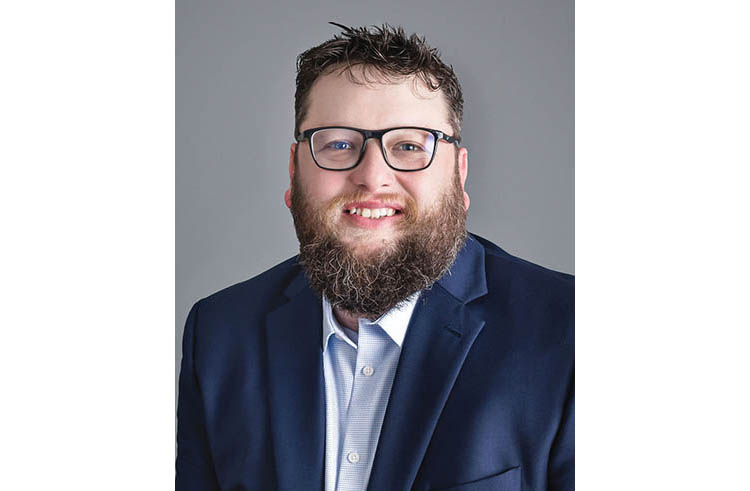— Interview with Cameron Funk —
How separating your waste streams can maximize sustainability.
Following is a Q&A with Cameron Funk, chief sustainability officer of CheckSammy, an on-demand nationwide waste removal and sustainability services company headquartered in Dallas. We were interested to learn what options facilities managers may have to divert materials from the waste stream, and what challenges they may run up against in their quest to achieve maximum profitability through sustainability.
R&R: What are the biggest challenges for retail and restaurant facility managers who are looking to divert more materials away from the landfill?
Cameron Funk: The biggest opportunity today is separating commingled waste at the source, which is less daunting than it sounds. Based on your size, available space and seasonal needs, you can add containers to supplement your regular waste service and dedicate yourself to a more sophisticated recycling program.
Establishing these specific waste collections at your restaurant or retail facility can lead to more responsible end-destinations for each type of material beyond the landfill. This also will help prepare you for increasing regulations at the state or municipal levels.
For example, it’s possible to separate food waste from plastics and textiles from furniture, which will allow you to observe measurable increases in how much of each material you’re diverting from the landfill.
We’ve found that separating packaged and unpackaged organics can positively affect the waste stream, so we encourage our clients to separate those at the source and train their employees on the proper ways to handle each type of organics.
It also surprises many people to learn how many alternative solutions there are for properly sorted waste. There are nonprofit organizations seeking textiles. Some plastics can be converted into liners for things like residential swimming pools. There are even companies that will pay you for certain commodities, like plastic, that haven’t been contaminated by other materials.
The challenge is that most facilities managers don’t know where to begin or know that there are experts who can help them manage this journey.
R&R: What sustainability solutions are most relevant to the retail and restaurant industries?
Funk: Beyond sorting waste streams at the source, another opportunity is finding a more responsible solution for complex or hard-to-recycle items and unexpected overflow. We all do our best to plan ahead, but unique situations and emergencies can arise that often require extra space or hands. These needs typically cannot be addressed by a traditional waste hauler.
In the retail space, we recently recycled over 55,000 mannequins for a national chain by coordinating pickup from 650 locations across the country. We source-separated and repurposed the materials, diverting over 170 tons of plastic and 54 tons of metal from the landfill.
In another example, we worked with a food manufacturer to dispose of 65 tons of tainted peanut butter. Not only were we able to deal with the peanut butter for a lower price than sending it to the landfill, but we were able to divert that peanut butter away from the landfill by recycling the plastic lids and using an anaerobic digestion facility to convert the peanut butter to biogas, which itself was piped to the local energy facility and used to power the local town.
Other needs may involve an uptick in holiday season cardboard or plastic, or a remodeling project that produces complex materials.
We also work with a number of clients to take excess textiles, including polyester clothing, and recycle those domestically. We don’t believe in sending textiles offshore, as the carbon footprint incurred in shipping material negates the positive impact of recycling those clothes.
All of these bring an opportunity to show customers, employees and other stakeholders how your company is making responsible choices away from the landfill.
R&R: Do you have any advice for retail or restaurant organizations building new facilities?
Funk: We are part of the Green Sports Alliance and participate in conversations around building for the future. Designing new facilities for the current state of recycling is a recipe for becoming outdated but building flexible spaces that can be adjusted for advancing technology ensures that the facility is able to keep up with evolving waste and recycling technology.
Give yourself enough space to add new containers that will allow you to separate streams even more granularly. If you’re forward-looking enough to separate packaged organics from unpackaged organics, it will reduce your costs and increase the variety of options you have at your disposal. The best solution is a local solution so it’s important to maximize recycling and end-use outcomes that leverage or exhaust all available local channels.
R&R: Sustainability is important, but businesses need to focus on their bottom lines, or they won’t be in business any longer. How do you recommend balancing profitability and sustainability?
Funk: This is a great question. It presupposes that sustainability and profitability are opponents in a zero-sum game, but they are not mutually exclusive. With rising tipping fees at landfills and increased value for materials like plastics, textiles and metals, it’s possible to offset costs.
We also know that consumers and stakeholders continue to report how much more they value brands that pursue sustainability investments.
— Cameron Funk is chief sustainability officer at CheckSammy, an on-demand nationwide waste removal and sustainability services company headquartered in Dallas.
